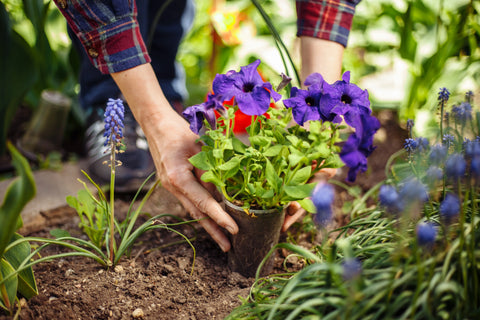How to maintain the easiest houseplant, the Pothos

If you are a novice in adding houseplants to your indoor décor, Pothos plants are the easiest ones to cultivate and maintain in the house. Read our guide and enjoy your new houseplants.
Introduction to Pothos
|
Our Pothos plants from the Solomon Islands are the most recommended houseplants to novices since they are the easiest ones to grow in the house. This stunning houseplant has heart-shaped green foliage with white and yellow stripes. Despite being easy to care for, Pothos rise to 30 feet tall. This plant, poisonous for pets, is better arranged in zones distant from our furry friends with indirect daylight. Pothos can make some efforts and blossom in low-light spaces relying only on fluorescent lighting, making it an incredible alternative for offices and dorm rooms. |
Light
|
Once you have your Pothos pot, you should aim at positioning it to obtain bright and indirect sunlight through windows around the house. In the lack of sun, most colorful plants will lose their foliage pattern, so placing them in more sunshiny states would be great. |
Soil
|
As long as you can provide ordinary, well-draining potting soil, you will enjoy beautiful wellgrown Pothos plants indoors. As one of the easiest plants indoors, you won't need to worry about a customized soil mixture since Pothos plants tolerate its pH from neutral to acidic. |
Water
|
A Pothos plant enjoys dried-out soil between waterings. Otherwise, waterlogged soil will drive roots to rot. Whenever the plant needs to get watered, you will notice its black spots on the leaves or when it starts to drop yellow leaves. |
Temperature
|
Another vital element to pay attention to when you need to position a Pothos plant, it's the temperature range of at least 18°C. The ideal range would be temperatures between 18 and 24°C. |
Humidity
|
As we could foreknow from a South Pacifica-born plant, Pothos blossom most adequately in high humidity levels. Nevertheless, the plant is adjustable and can flourish even in low humidity, so adding an artificial humidifier is unnecessary. |
Fertilizer
|
Regardless of not demanding way too much engagement in their maintenance routine, Pothos plants are generally not nutritious. So, as its owner, who should add its nutrition level, you must take care of feeding the plant one to two months with a balanced fluid fertilizer. |
Replacement
|
When its greenery starts falling, it's a sign that the root's system development has advanced to the limits within the pot, and it's an issue beyond the watering plan. Gently move the plant out of its jar and repot it into a new pot. It's highly advised to pick a new container one or two extents larger with lots of refreshed potting soil. |
Multiplying Pothos
|
Like many other plants, Pothos might get procreated from branch pieces. Utilize clean, sharp scissors to cut at least three leaves from a healthy stem, and clip it at an angle about a half-inch. Extract the lowest leaf from the branch, set the stem in a vase of water, and once the cut part has grown new sources in a few weeks, place it into a pot with organic soil. Position the new container with bright indirect sunlight with an average wet mud. |
Expected Pests
|
Pothos are toxic, yet most of the time, these houseplants are pest-free with sometimes some mealybugs. A simple insecticidal soap prevents the pests, but the most manageable approach is simply wiping the insects with alcohol-soaked fabric cloth. |


